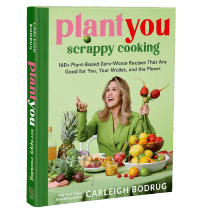Peanut Butter Curry
I hope you’ve missed the Recession Recipes, because this one is a BOMB. A delicious, creamy peanut butter curry that works out less than $2 per serving… You’re gonna love it!
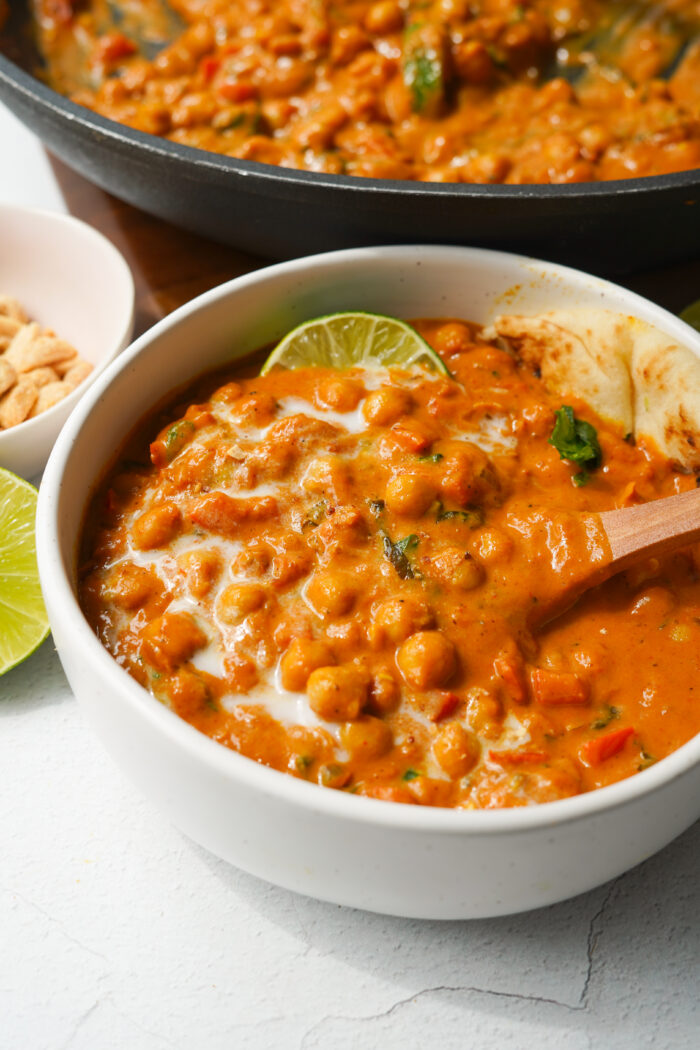
The cost of living has been steadily climbing up for the last few years, and it’s showing no signs of stopping. This is why I’m on a mission to create delicious yet Uber-affordable meals that nourish your body and soul.
For those on a tight budget, it is more difficult than ever to plan meals. Especially if you’re budgeting for a larger family.
I’m happy to report that this amazing peanut butter curry totals at less than $2 per serving. Plus, it is incredibly easy to make.
Why You’ll Love This Recipe
- Naturally, the major selling point of this recipe is the cost. This peanut butter curry can feed a family of five with just $10. How amazing is that?
- You might argue that the variety of spices in an investment in itself. And although my calculations only included the amount of spices I used for the recipe, these spices are worth investing into. It is basically a staple set for any curry, so they will not be going to waste.
- Speaking of waste, this recipe produces minimal waste. For this peanut butter curry, we are mostly using non-perishable ingredients, avoiding a whole lot of food waste. Plus, it’s freezer-friendly!
- Although peanut butter is far from an authentic ingredient in Indian or Bangladeshi cuisine, it’s a great budget-friendly easy to make your curry creamy and smooth.
- The actual prep for this recipe is minimal, which means even complete beginners will be able to make it! Plus, it takes very little time to make and tastes even better when reheated.
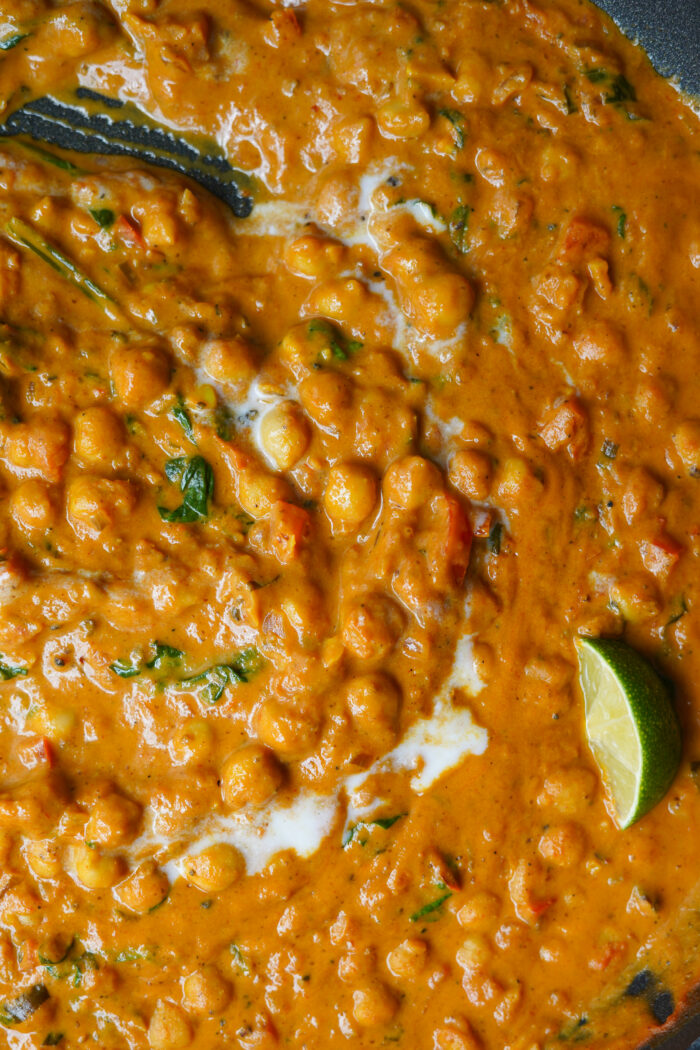
How to Make This Recipe
Heat a non-stick pan over medium heat. Add the onion and sauce until fragrant with a tablespoon of water or olive oil.
Next, add garlic, ginger, and the curry spices. Saute everything together for a couple of more minutes, until the spices are toasted and release the aroma.
Add peanut butter, crushed tomatoes and chickpeas. Cook while stirring regularly until the peanut butter melts and mixes in with the rest of the contents. Finally, stir in the coconut milk and cook until the curry fully warms up again
At this point, a handful of spinach or herbs and a squeeze of lime provide the perfect finishing touches. Serve with rice or naan.
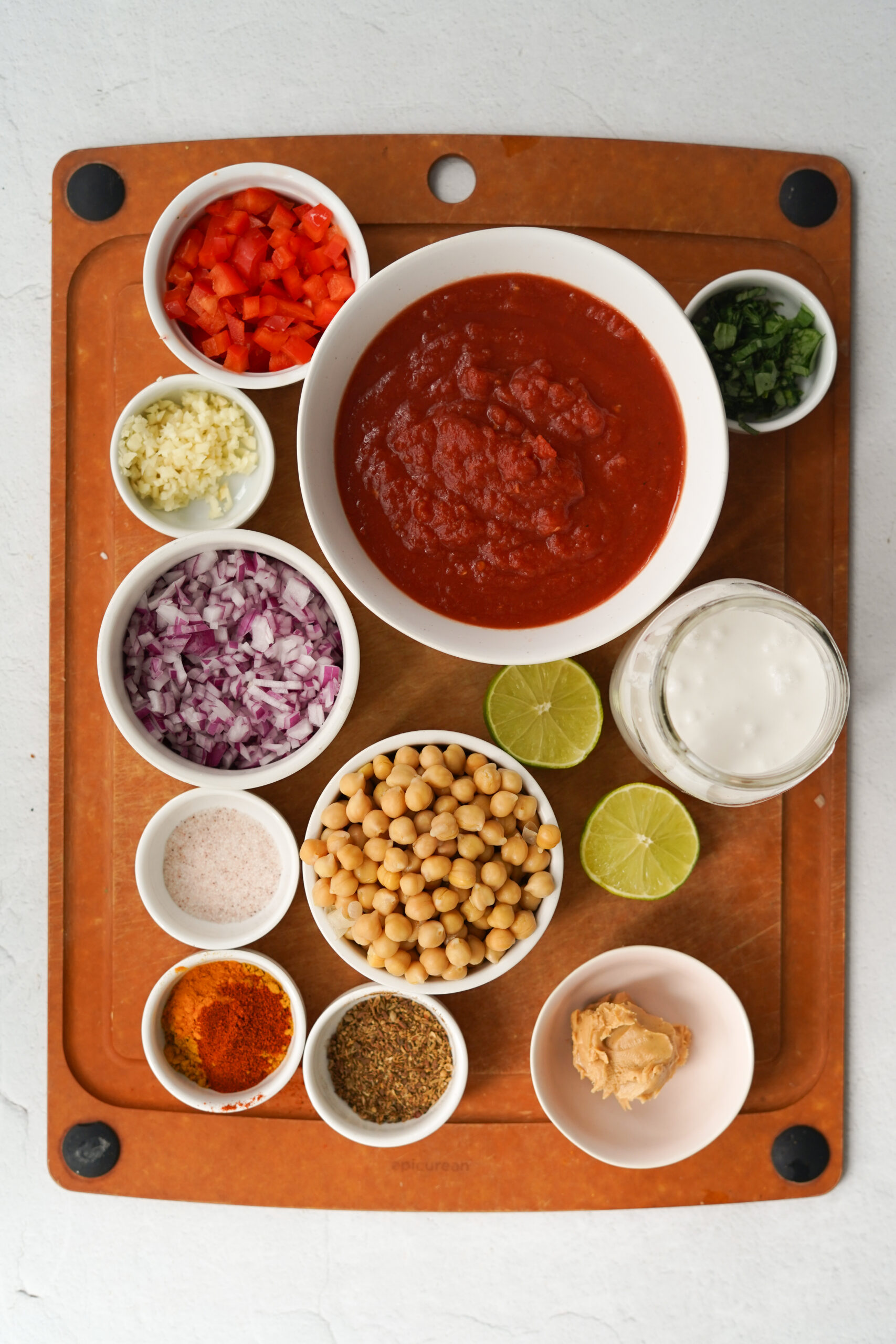
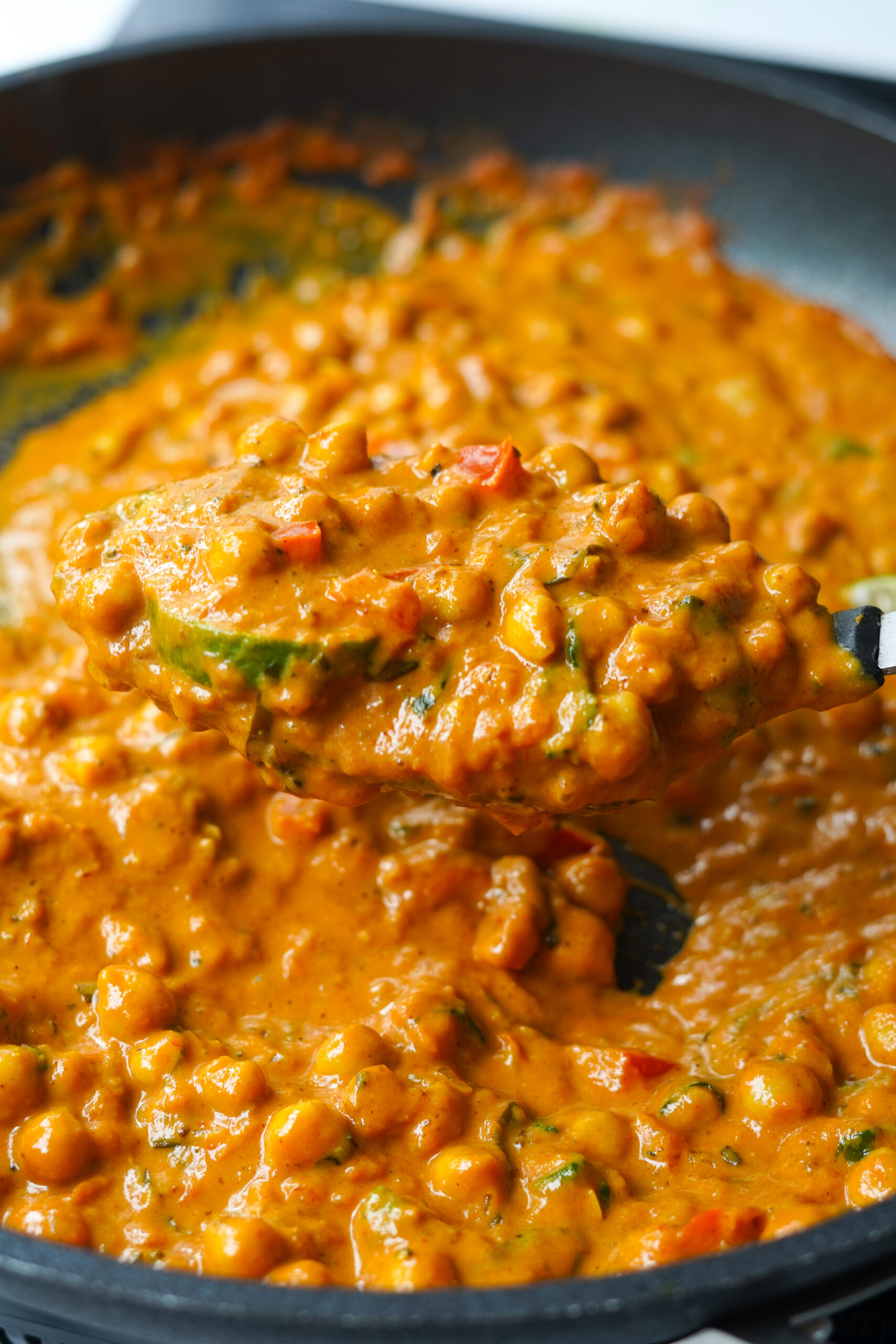
Hack It!
- The greens are the perfect opportunity to use up whatever you have left in the fridge. Spinach famously goes well with curry, but you can also have parsley, mint, or fresh cilantro. The alternative, of course, is to use frozen spinach.
- Chickpeas are another classic ingredient of a vegan- and vegetarian-friendly curry. However, for an alternative source of protein, you could use lentils, butter beans, tofu, or textured soy protein.
- If you have a peanut allergy, this recipe actually works well with cashew or sunflower butter instead.
- Some people like to add a touch of sweetness to their curry. Feel free to stir in a tablespoon of maple syrup or brown sugar as you’re sautéing onions.
- How you choose to serve this dish is up to you. Rice and naan are classic sides. However, you could also serve this curry with poppadoms, potatoes, or on its own.
The Perfect Working Class Meal
Curry dishes are an integral part of everyday meals and celebrations in South Asian countries like India and Bangladesh. These countries have a rich culinary history that includes a vast array of regional cuisines and styles of preparing curries.
The cultural significance of curry dishes in South Asia is deeply rooted and reflects the diversity of flavors, ingredients, and cooking techniques unique to each region.
During the colonial era and beyond, significant numbers of South Asian people migrated to various parts of the world, including the United Kingdom, as part of labor migration, trade, and other opportunities.
Forming entire communities, many South Asian immigrants settled in working-class neighborhoods in these countries. As a result, curry houses and restaurants emerged to cater to both the immigrant population and the local working class.
Part of the reason curry dishes became so integrated into British culinary landscape is due to their variety and affordability. These dishes often featured hearty portions, a combination of meat and vegetables, and bold flavors. The working-class demographic embraced them as comfort food that provided sustenance and satisfaction.
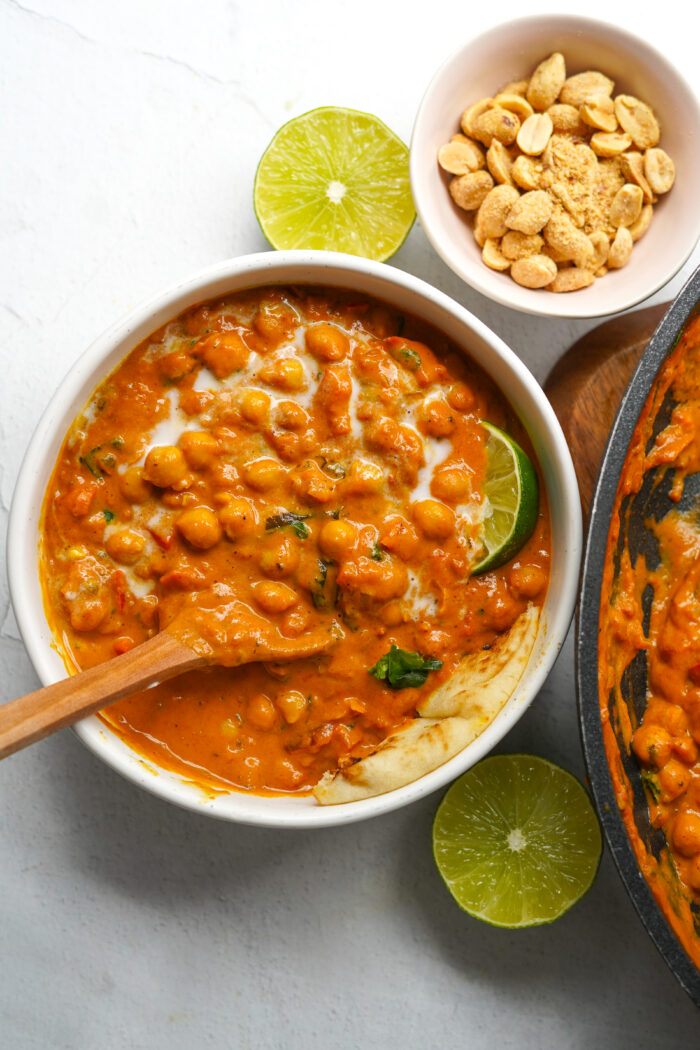
Spice is Nice!
Spiced foods like curries can offer various health benefits, primarily due to the inclusion of a wide range of spices and herbs that are commonly used in such dishes. Many of these spices have been studied for their potential health-promoting properties. Here are some potential health benefits of spiced foods:
- Anti-Inflammatory Effects. Spices like turmeric, ginger, and garlic commonly found in curries contain compounds with anti-inflammatory properties. Chronic inflammation is linked to various health issues, and incorporating these spices into your diet may help mitigate inflammation.
- Antioxidant Rich. Spices like turmeric, cinnamon, and cumin are rich in antioxidants, which help protect cells from damage caused by free radicals. Antioxidants play a role in preventing chronic diseases and supporting overall health.
- Digestive Aid. Many spices used in curries, such as cumin, coriander, and fennel, have traditionally been used to aid digestion. They can stimulate the production of digestive enzymes, ease gas and bloating, and promote overall digestive health.
- Metabolism Boost. Some spices, like chili peppers, contain capsaicin, a compound known to boost metabolism and promote fat burning. This can have potential benefits for weight management. Ginger is another spice famous for its metabolic properties.
- Cardiovascular Health. Spices like garlic, ginger, and fenugreek have been associated with cardiovascular benefits. They may help lower blood pressure, reduce cholesterol levels, and improve heart health.
- Cognitive Health. Curcumin, a compound found in turmeric, has shown promise in supporting brain health by crossing the blood-brain barrier and possessing potential neuroprotective properties.
It’s important to note that while spices can offer health benefits, they are best consumed as part of a balanced diet that includes a variety of nutrient-rich foods like fruit, veggies, and grains. Additionally, individual responses to spices can vary, and some people may be sensitive to or have allergies to certain spices.
Other Recipes You’ll Love
- Hidden Veggie Tofu Curry
- Chickpea Spinach Curry
- Ginger Juice, Tea and Spice (Zero Waste)
- Roasted Vegetable Curry
- Super Green Pasta (Recession Recipe)
If you’re all about simple and affordable recipes, trust me, you’re going to want to snag a copy of the PlantYou Cookbook! It has over 140 vibrant and delicious plant based recipe, so it’s a real treasure trove of wholesomeegan meals that are perfect for any occasion. As someone who learns best visually, I’ve made sure this cookbook is super user-friendly. Each recipe comes with a handy infographic that breaks down all the ingredients to make it as accessible as possible!
Now, if you’re more of an adventurous home chef, let me introduce you to the PlantYou Planner! It’s like your personalized meal planning genie, offering up a bunch of easy-peasy vegan recipes. The best part? You can dip your toes into the magic with the free version. You’ll get 25 awesome plant-based meals, including our top-notch beginner vegan meal plan.
Oh, and the icing on the vegan cake is that I’ve teamed up with an incredible women-led business to create Complement x PlantYou Essential. It’s a powerhouse multinutrient supplement specially crafted for all you plant-based champs out there. This is a game-changer that makes thriving on a vegan diet an absolute breeze. Trust me, your taste buds and your body will be doing a happy dance.
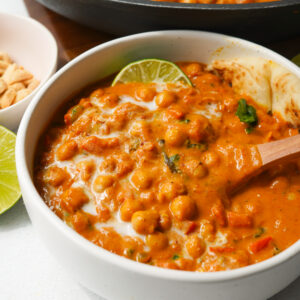
The Recipe: Peanut Butter Curry
Ingredients
Produce
- 1 red onion, small, diced
- 3 cloves garlic, diced
- 1 thumb ginger, diced
- ½ red bell pepper, chopped
- 1 handful spinach, or chopped fresh herbs
- 1 lime, juiced
Spices and seasonings
- 2 tbsp peanut butter
- 1 tbsp curry powder
- 2 tbsp garam masala
- ½ tsp paprika
- ½ tsp turmeric
- 1 tsp salt
Canned goods
- 1 can crushed tomatoes, 15 oz
- 1 can chickpeas, 15 oz, drained and rinsed
- 1 can coconut milk, 15 oz
Equipment
- Large non-stick pan
Instructions
- In a pan over medium heat, add the red onion and a tablespoon of water or olive oil. Saute until fragrant, approximately 3 minutes.
- Add the garlic and ginger along with the curry spices and bell pepper. Saute for a couple of more minutes, until the spices are toasted.
- Add the peanut butter, crushed tomatoes and chickpeas, and stir, until the peanut butter is melted and the spices have mixed with the crushed tomatoes. Add in the coconut milk and stir.
- Finish with a handful of fresh herbs or spinach and a squeeze of lime. Enjoy with rice or naan, as desired.

